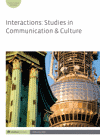
Full text loading...

By reflecting on alternative forms of knowledge co-production through art-based methods, the article discusses the potential of Participatory Action Research (PAR) as a responsive research praxis. Art-based methods have widely been used in research engaging communities through giving access to the worlds of participants. At the intersections of disciplines, benefiting from a range of art forms from photography to theatre, this approach provides the space and tools for the exploration of multiple perspectives about shared problems or questions. In this respect, PAR is a significant methodology for communication studies with its alternative ways of knowledge production by positioning ‘dialogue’ and ‘participation’ at the centre.

Article metrics loading...

Full text loading...
References


Publication Date:
https://doi.org/10.1386/iscc_00008_1 Published content will be available immediately after check-out or when it is released in case of a pre-order. Please make sure to be logged in to see all available purchase options.